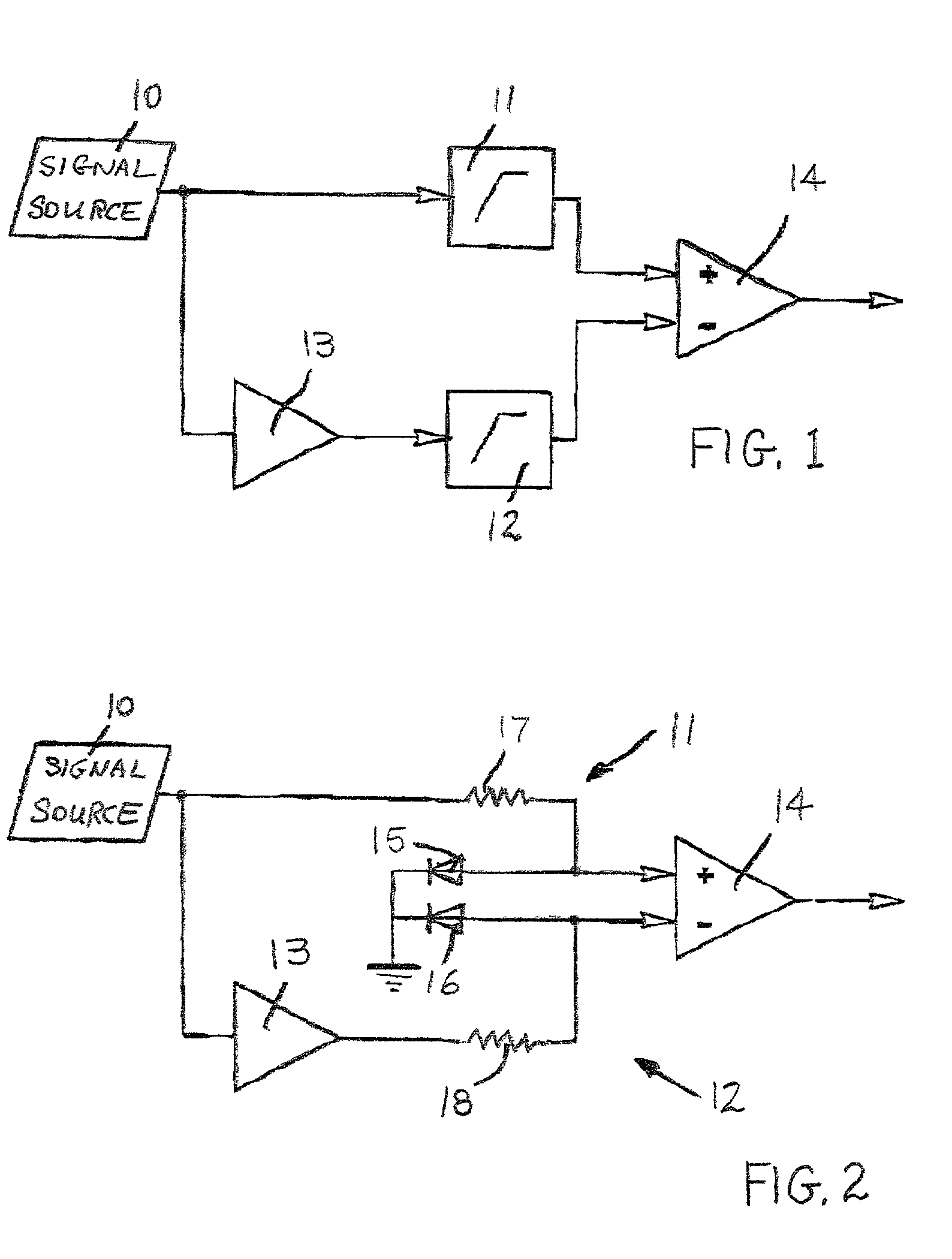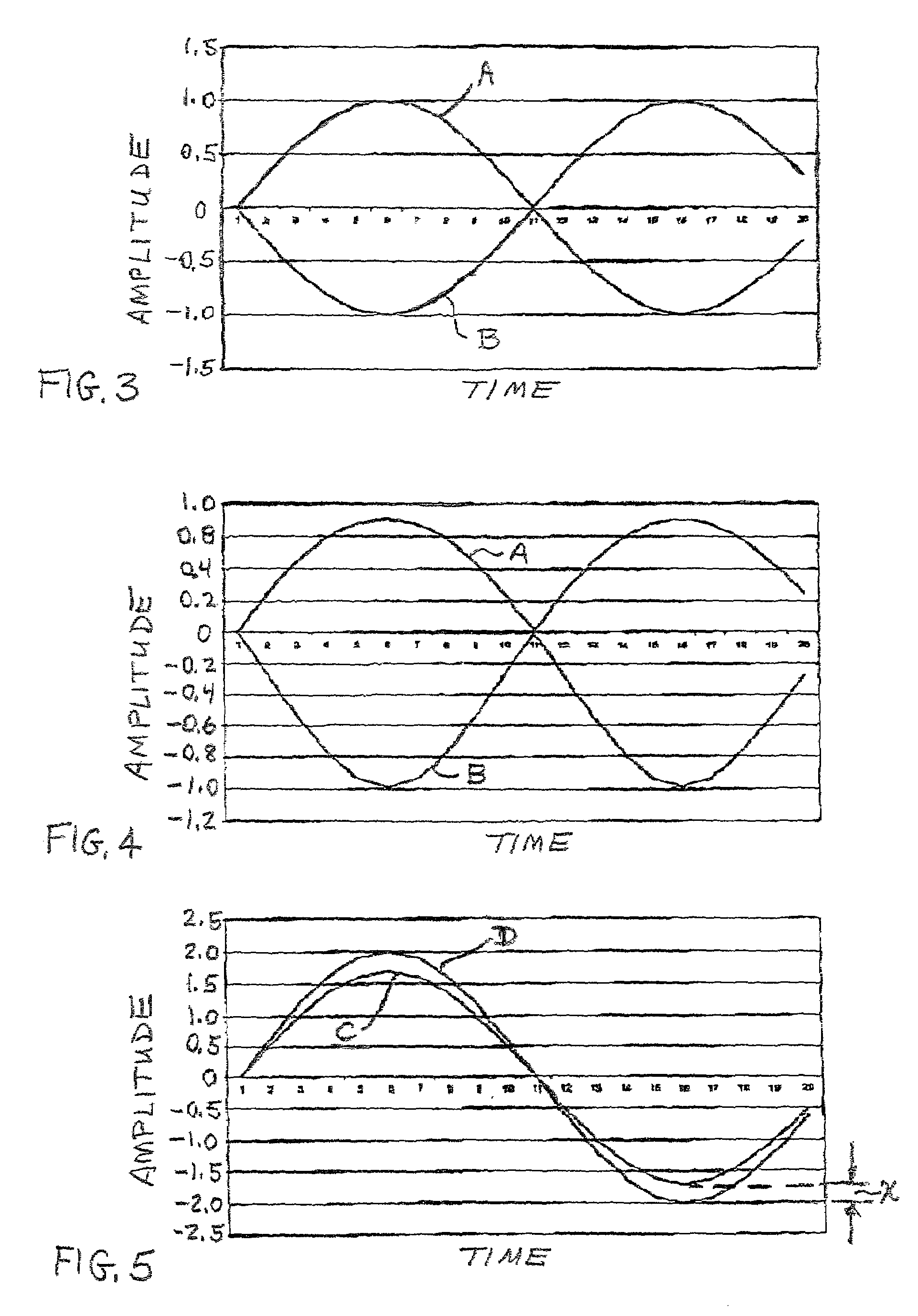Audio circuitry for dynamics reduction
a technology of audio circuitry and dynamics, applied in the field of low-frequency circuits, can solve the problems of loss of valuable signal-to-noise ratio, loss of signal quality, distortion at locations in the circuit, etc., and achieve the effect of simple, economical design and high degree of adjustability
- Summary
- Abstract
- Description
- Claims
- Application Information
AI Technical Summary
Benefits of technology
Problems solved by technology
Method used
Image
Examples
Embodiment Construction
[0022]FIG. 1 is a schematic diagram that shows the general design of a low-frequency circuit used to process audio signals. An audio signal is supplied by a signal source 10. In the embodiment shown here, this audio signal from signal source 10 has an asymmetrical shape. This means that relative to ground, the(signal source 10 produces an audio signal having a specified phase orientation. This audio signal is supplied to the low-frequency circuit. This circuit comprises a first input stage 11 and a second input stage 12. The two input stages, 11 and 12, preferably are designed in an essentially identical way and essentially have the same nonlinear performance curves. These input stages can be designed as passive elements as will be described below based on FIG. 2. Alternatively, input stages 11 and 12 can be active elements based on amplifiers, etc.
[0023]The audio signal supplied by the signal source 10 is fed into the input of input stage 11. An inverter 13 is located ahead of the ...
PUM
 Login to View More
Login to View More Abstract
Description
Claims
Application Information
 Login to View More
Login to View More - R&D
- Intellectual Property
- Life Sciences
- Materials
- Tech Scout
- Unparalleled Data Quality
- Higher Quality Content
- 60% Fewer Hallucinations
Browse by: Latest US Patents, China's latest patents, Technical Efficacy Thesaurus, Application Domain, Technology Topic, Popular Technical Reports.
© 2025 PatSnap. All rights reserved.Legal|Privacy policy|Modern Slavery Act Transparency Statement|Sitemap|About US| Contact US: help@patsnap.com



